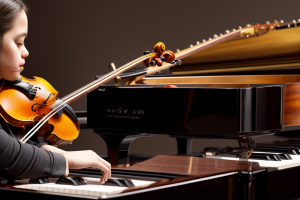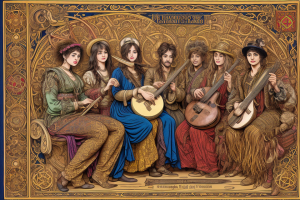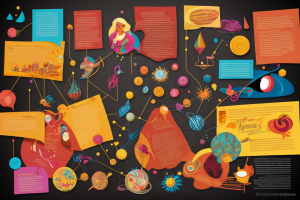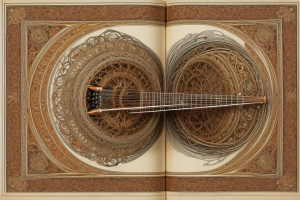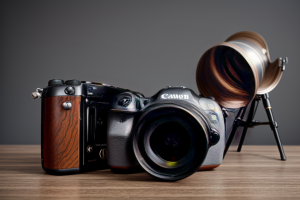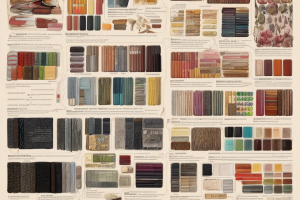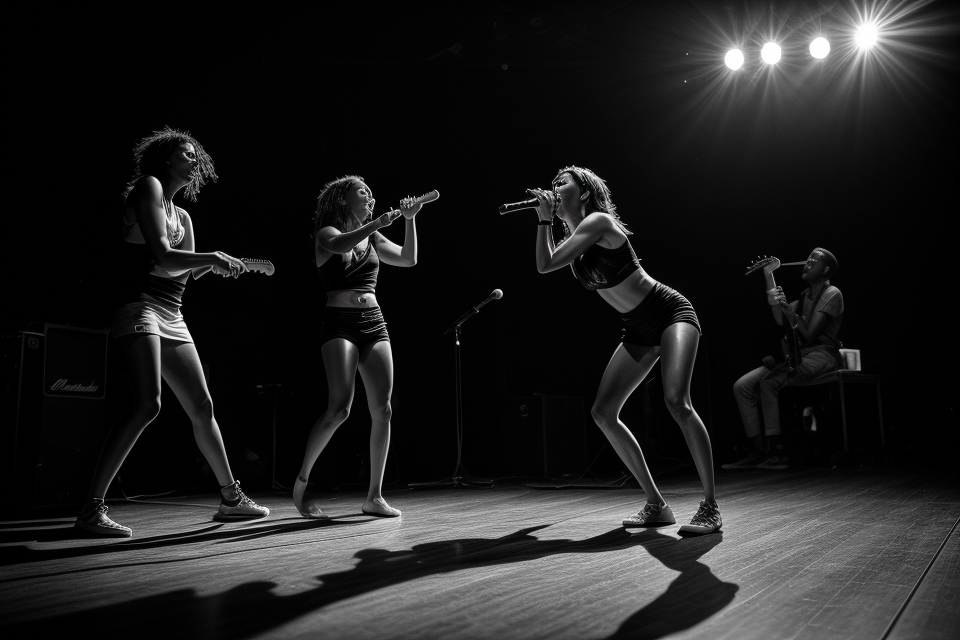
Ever wondered why musicians play instruments? It’s not just about making beautiful music; there’s a deeper passion and purpose behind it. From the rhythmic strum of a guitar to the melodic notes of a piano, each instrument has its own unique voice that can evoke a range of emotions in listeners. In this article, we’ll explore the reasons why musicians choose to play instruments and how it becomes an integral part of their lives. We’ll delve into the history of music-making, the connection between musicians and their instruments, and how technology has transformed the way we create and experience music. So, buckle up and get ready to discover the magic behind the music!
The Allure of Musical Instruments: Why Musicians Play
The Connection Between Musicians and Their Instruments
A deep emotional bond is formed between musicians and their instruments. This connection is built through hours of practice, performances, and the memories associated with each note played. The instrument becomes an extension of the musician’s body, allowing them to express their emotions and tell their story through music.
Personal expression and creativity are also key factors in the connection between musicians and their instruments. Each musician has their own unique style and voice, and their instrument allows them to bring their creative vision to life. Whether it’s through a guitar, piano, or violin, the instrument becomes a tool for self-expression and communication.
Cultural identity and tradition also play a significant role in the connection between musicians and their instruments. Many musicians are proud to carry on the musical traditions of their culture and heritage, and their instrument is a symbol of their identity and roots. For example, a musician playing a traditional African instrument like the djembe or kora is not only playing the music, but also preserving and celebrating their cultural heritage.
In summary, the connection between musicians and their instruments is a complex and multifaceted one, driven by emotion, creativity, and cultural identity. It is a relationship that is built over time and nurtured through practice and performance, resulting in a deep and meaningful bond between musician and instrument.
The Role of Instruments in Shaping Music
The relationship between musicians and their instruments is a unique and dynamic one. It is a partnership that is essential to the creation of music. The instrument is not just a tool for the musician to produce sound, but it is also an integral part of the creative process. Different instruments have different characteristics and capabilities, which influence the style and genre of music that can be produced.
Different instruments for different genres
Each instrument has its own distinct sound and timbre, which is shaped by its physical characteristics. For example, the piano has a rich, full sound with a wide range of dynamics, making it ideal for classical and jazz music. The guitar, on the other hand, has a more intimate and personal sound, which is often associated with folk and rock music. The rhythmic and percussive qualities of drums make them an essential part of many genres, including jazz, rock, and pop.
The instruments used in a particular genre often shape the style and character of the music. For example, the use of the sitar in Indian classical music and the koto in Japanese traditional music gives each genre a unique sound that is synonymous with its cultural identity.
Technical capabilities and limitations
The technical capabilities and limitations of an instrument also play a crucial role in shaping the music that is produced on it. For example, the violin’s ability to produce a wide range of dynamics and bowing techniques allows for a high degree of expressiveness in classical music. The complex fingering and pedal techniques required to play the accordion make it an essential part of many folk and traditional music styles.
The limitations of an instrument can also inspire creativity and innovation. For example, the use of the theremin, an early electronic instrument, in Soviet film music of the 1920s was limited by its inability to produce a stable pitch. This led to the development of new techniques and sounds that were unique to the instrument.
Influence on composition and performance
The instrument used by a musician can also influence the way they compose and perform their music. For example, the use of the saxophone in jazz music allows for a high degree of improvisation and expression, while the use of the cello in classical music allows for a more nuanced and subtle approach to the music.
The physical and technical characteristics of an instrument can also affect the way a musician performs their music. For example, the use of the flute requires a different technique than the trumpet, which in turn requires a different technique than the violin. The unique physical and technical demands of each instrument can shape the style and character of the music that is produced on it.
In conclusion, the relationship between musicians and their instruments is a complex and dynamic one. The instrument is not just a tool for producing sound, but it is also an integral part of the creative process. The physical and technical characteristics of an instrument shape the style and genre of music that can be produced on it, and the limitations of an instrument can inspire creativity and innovation. The instrument used by a musician can also influence the way they compose and perform their music, and the unique physical and technical demands of each instrument can shape the style and character of the music that is produced on it.
Musicians and Their Instruments: A Match Made in Heaven
Instrument Selection and Musicians’ Personalities
Musicians often have a deep connection with their instruments, and this bond is shaped by a variety of factors, including their personalities. The instrument selection process is an essential aspect of a musician’s journey, as it can significantly impact their musical style and expression.
Choosing the right instrument for their style
Musicians usually begin by choosing an instrument that suits their preferred genre or style of music. For instance, a guitar is a popular choice for rock and pop musicians, while a piano is often favored by classical and jazz musicians. The instrument’s timbre, range, and versatility are crucial factors in determining its suitability for a particular style.
How personality traits influence instrument choice
Personality traits also play a significant role in shaping a musician’s relationship with their instrument. Extroverted musicians may prefer instruments that allow them to engage with their audience, such as the drums or electric guitar. On the other hand, introverted musicians might be drawn to instruments that enable them to express themselves more intimately, like the piano or acoustic guitar.
Adapting to different instruments for artistic growth
As musicians progress in their careers, they may need to adapt to new instruments to continue their artistic growth. This can be a challenging process, as it requires musicians to learn new techniques and adjust their playing style. However, embracing new instruments can also lead to exciting creative opportunities and help musicians develop a more diverse musical palette.
In conclusion, the relationship between musicians and their instruments is a complex and multifaceted one, shaped by a combination of personal preferences, artistic goals, and individual personalities. By carefully selecting and adapting to the right instruments, musicians can unlock their full creative potential and share their unique musical vision with the world.
The Importance of Technique and Skill
Musicians often find themselves drawn to a particular instrument, whether it be a guitar, piano, or violin, as if it were an extension of their own being. This connection between the musician and their instrument is a unique and intimate relationship that is built on the foundation of technique and skill. Mastering an instrument requires dedication, patience, and a relentless pursuit of perfection. It is a journey that demands discipline and passion, but the rewards are immeasurable.
The journey of musical development begins with the basics, learning the proper technique and building fundamental skills. Musicians must understand the mechanics of their instrument, the physics behind the sound it produces, and the nuances of the music they are playing. They must develop the ability to read sheet music, understand rhythm and tempo, and listen critically to their own performances. It is a daunting task, but one that is necessary to unlock the full potential of the instrument.
As musicians progress, they continue to hone their skills, constantly striving for technical perfection. This pursuit is what drives them to practice for hours on end, to attend workshops and masterclasses, and to seek out new challenges and opportunities to grow. They push themselves to the limit, challenging their own abilities and seeking to expand their boundaries. They know that there is always more to learn, more to discover, and more to achieve.
But the pursuit of technical perfection is not just about mastering the instrument, it is also about using it as a tool for personal expression. Musicians use their instruments to communicate their deepest emotions, to tell stories, and to connect with their audience. The instrument becomes an extension of their voice, a means of expressing themselves in ways that words alone cannot convey. It is a powerful tool, one that allows them to share their passion and purpose with the world.
In conclusion, the importance of technique and skill in the relationship between musicians and their instruments cannot be overstated. It is the foundation upon which all other aspects of musical performance are built. Mastering an instrument is a lifelong journey, one that requires dedication, discipline, and passion. But for the musician, it is a journey that is filled with rewards, both personal and professional, and one that leads to a deeper understanding of themselves and their place in the world.
Musicians and Their Instruments: A Collaborative Dance
The Synergy Between Musicians and Their Instruments
How instruments enhance musical communication
The relationship between musicians and their instruments is a unique and intimate one. It is through their instruments that musicians are able to express themselves and communicate with their audience. Each instrument has its own distinct sound and character, and it is up to the musician to coax out the nuances and subtleties of that sound. This intimate connection between musician and instrument allows for a heightened level of communication between the two, as the musician’s every breath, touch, and movement is translated into music through the instrument.
Collaboration with other musicians
Another aspect of the synergy between musicians and their instruments is the ability to collaborate with other musicians. A musician’s instrument is not just a solo tool, but a means of communication and collaboration with other musicians. Through their instruments, musicians are able to work together to create a cohesive and dynamic sound. Whether it’s through a tight rhythm section or a soaring string section, the instruments of each musician work together to create a greater whole.
The impact of instruments on live performances
Finally, the synergy between musicians and their instruments is most apparent in live performances. It is here that the musician’s instrument becomes an extension of their body, a tool for expressing their passion and purpose. The energy and emotion of a live performance is heightened by the physicality of the instrument, and the musician’s connection to it. The audience can feel the power and intensity of the musician’s performance, and the instrument becomes a vessel for the musician’s soul.
Overall, the synergy between musicians and their instruments is a complex and multifaceted relationship. It is a partnership that allows for the expression of passion and purpose, the communication of musical ideas, and the creation of dynamic and collaborative performances.
The Power of Instruments in Conveying Emotions
When musicians take to the stage, they are not just playing music; they are engaging in a collaborative dance with their instruments. The power of instruments in conveying emotions is a vital aspect of this collaboration. Music has the unique ability to evoke emotions in listeners, and instruments play a crucial role in creating the atmosphere and mood that draws out these feelings.
Expressing Feelings through Music
Music has been used for centuries as a means of expressing emotions. From classical compositions to modern-day pop songs, music has the ability to capture the essence of human emotions and convey them to the listener. The melody, rhythm, and harmony of a song can all contribute to the emotional impact it has on the listener.
The Role of Instruments in Creating Atmosphere
Instruments play a crucial role in creating the atmosphere and mood of a song. For example, a slow, melancholic melody played on a piano can evoke feelings of sadness and longing, while a fast-paced, upbeat rhythm played on a guitar can create a sense of excitement and energy. The timbre, tone, and texture of each instrument can add to the emotional impact of the music.
Instruments as Storytellers
Instruments can also be used as storytellers, conveying emotions and narratives through the music they produce. For example, the haunting melody of a violin can tell a story of loss and heartache, while the driving beat of a drum can tell a story of triumph and victory. The use of instruments in this way can add depth and complexity to the emotional landscape of a song.
In conclusion, the power of instruments in conveying emotions is a vital aspect of the collaborative dance between musicians and their instruments. From expressing feelings through music to creating atmosphere and telling stories, instruments play a crucial role in bringing emotions to life through music.
Musicians and Their Instruments: A Love Story for the Ages
The Connection That Goes Beyond Words
The language of music and its universal appeal
Music has a unique power to transcend language barriers and connect people across cultures. This universal language of music speaks to the soul and can bring people together, even when words cannot. Musicians and their instruments form a symbiotic relationship, where the musician’s passion and the instrument’s unique qualities combine to create something greater than the sum of its parts.
How instruments bridge cultural divides
Instruments from different cultures often have their own distinct sounds and playing styles, allowing musicians to express themselves in new and innovative ways. For example, the sitar in Indian classical music or the koto in Japanese traditional music have their own unique tonal qualities that can evoke specific emotions and moods. By learning and mastering these instruments, musicians can gain a deeper understanding and appreciation of the cultures they represent.
The power of music to heal and unite
Music has long been recognized for its therapeutic benefits, with studies showing that it can reduce stress, anxiety, and depression. It has also been used as a tool for social change, promoting unity and understanding among diverse communities. When musicians come together to create music, they are not just playing notes, but also sharing a piece of themselves and their culture. This exchange of passion and purpose can lead to deeper connections and a greater sense of unity among people from different backgrounds.
In conclusion, the connection between musicians and their instruments goes beyond words, transcending cultural boundaries and bringing people together through the universal language of music. The passion and purpose that drives musicians to master their craft is evident in the unique sounds and styles of their instruments, creating a symphony of understanding and unity that can inspire and heal the world.
The Legacy of Musicians and Their Instruments
- Instruments as an extension of the musician
- The intimate relationship between musicians and their instruments is a testament to the profound connection between the two. Musicians often refer to their instruments as extensions of their own bodies, expressing that their instruments are not merely tools for creating music, but rather an integral part of their identity. This intimate bond is built through countless hours of practice, performance, and creative expression, resulting in a deep understanding and appreciation for the unique qualities of each instrument.
- Passing down knowledge and traditions
- The legacy of musicians and their instruments also extends beyond the individual musician. Many musicians feel a responsibility to pass down their knowledge and traditions to the next generation, ensuring that the musical heritage they have inherited is preserved and continued. This can take the form of mentorship, teaching, and even donating instruments to aspiring musicians in need. In this way, the legacy of a musician’s instrument extends beyond their own life and continues to inspire and influence others long after they are gone.
- The enduring impact of musical legacies
- The impact of a musician’s legacy is not limited to their immediate circle of influence. Musicians and their instruments have the power to transcend time and space, reaching new audiences and inspiring new generations of musicians long after they are gone. This is evident in the countless tributes, cover songs, and homages paid to iconic musicians and their instruments, demonstrating the enduring impact of their creative legacy.
By exploring the relationship between musicians and their instruments, we can gain a deeper understanding of the passion and purpose that drives their creative pursuits, and the enduring impact that their artistry has on the world.
FAQs
1. Why do musicians play instruments?
Musicians play instruments for a variety of reasons. One reason is that it allows them to express themselves and their emotions through music. Playing an instrument can be a way for musicians to communicate with their audience and share their thoughts and feelings with them. Additionally, playing an instrument can be a way for musicians to connect with other musicians and create a sense of community.
2. What are some of the benefits of playing an instrument?
Playing an instrument has many benefits. It can improve a person’s cognitive skills, including their memory, attention, and processing speed. It can also improve their motor skills and dexterity. Playing an instrument can also be a great way to relieve stress and improve overall mental health. Additionally, playing an instrument can be a fun and rewarding hobby that can provide a sense of accomplishment and satisfaction.
3. What are some common instruments that musicians play?
There are many different types of instruments that musicians can play, but some of the most common include the guitar, piano, drums, and bass guitar. Each instrument has its own unique sound and playing style, and musicians often choose to play a particular instrument based on their personal preferences and the type of music they want to create.
4. How do musicians learn to play instruments?
Musicians can learn to play instruments in a variety of ways. Some may take lessons from a music teacher or instructor, while others may teach themselves through books, online tutorials, or by listening to recordings and experimenting with different techniques. Practice is a key component of learning to play an instrument, and musicians typically spend a significant amount of time practicing and refining their skills.
5. Why do some musicians choose to play multiple instruments?
Some musicians choose to play multiple instruments because it allows them to explore different sounds and styles of music. Playing multiple instruments can also be a way for musicians to expand their creative possibilities and bring new ideas to their music. Additionally, playing multiple instruments can be a way for musicians to challenge themselves and continue to grow as musicians.
